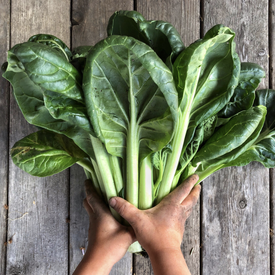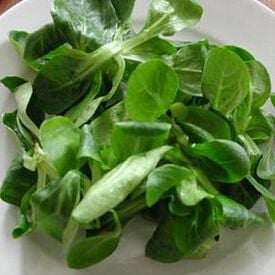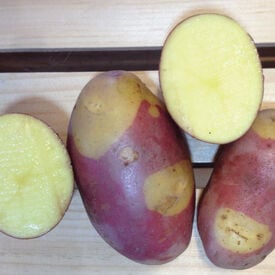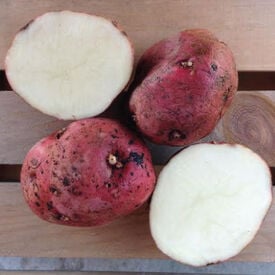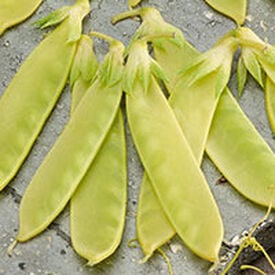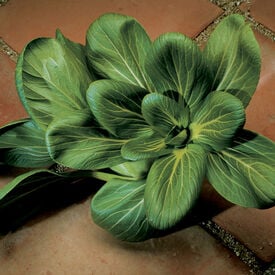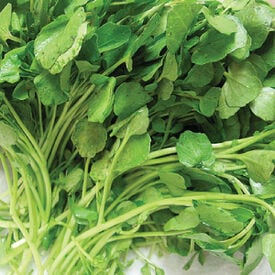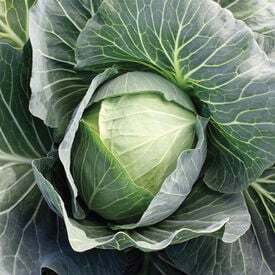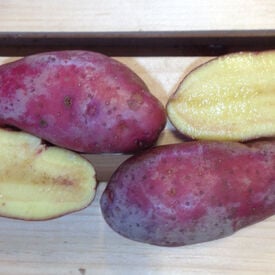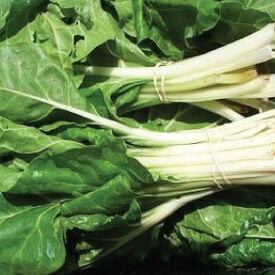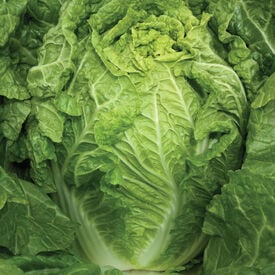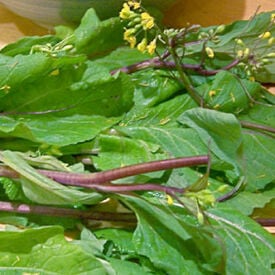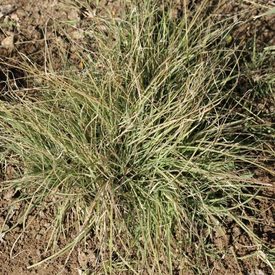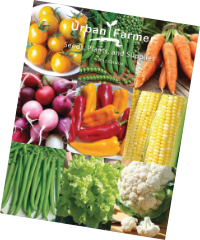Fragaria virginiana, commonly known as the Virginia or Wild Strawberry, is a native North American species that played a key role in the history of cultivated strawberries, having been crossed with the Chilean strawberry (F. chiloensis) in the 18th century to produce the modern garden strawberry. These plants spread by runners and form low mats, producing small, deep red berries that are celebrated for their intense sweetness and concentrated, classic strawberry aroma. While smaller than commercial varieties, the fruit packs a rich, complex flavor that many describe as more “wild” and satisfying. Adaptable and resilient, F. virginiana thrives in fields, forest edges, and meadows, with attractive trifoliate leaves, delicate white flowers, and a long tradition of use by both wildlife and people.
Fragaria vesca var. semperflorens ‘Golden Alexandria’ is a striking Alpine strawberry selection descended from long-cultivated European woodland forms, known for its unique chartreuse-to-golden foliage that adds ornamental flair to gardens. Unlike traditional runnering strawberries, it forms compact clumps that continuously fruit from late spring into fall, producing numerous small, bright red berries. The flavor is intensely sweet and aromatic, carrying the rich wild-strawberry taste that Alpine types are famous for, making them popular with gourmet growers. Its colorful leaves provide season-long visual interest, while the fragrant berries offer a delicious contrast, making ‘Golden Alexandria’ both decorative and highly flavorful.
Red Arrow radish seeds produce fast-growing plants that are primarily cultivated for their vibrant red stems and lush green leaves rather than their roots. This variety is especially prized for microgreens and edible shoots, offering a crisp texture and a bold, spicy radish flavor that adds zest to salads, sandwiches, and garnishes. Red Arrow is easy to grow, thrives in full sun to partial shade, and is well-suited for both garden beds and indoor trays. Its striking color and strong flavor make it a favorite among chefs and home growers alike.
Dwarf White Sugar peas are a compact, heirloom variety of edible-podded peas prized for their sweet, tender pods and early harvest. Growing to just about 2 to 3 feet tall, they require little to no support, making them ideal for small gardens and containers. These peas produce delicate white flowers followed by flat, crisp pods that can be eaten whole, either raw or cooked. Known for their mild, sugary flavor, Dwarf White Sugar peas are often harvested young for the best texture and taste. They thrive in cool weather and are typically among the first vegetables ready to harvest in the spring garden.
Tatsoi is a flavorful and versatile Asian green that thrives in cooler weather, making it a popular choice for spring and fall plantings. Known for its glossy, dark green, spoon-shaped leaves, Tatsoi has a mild, mustard-like flavor with a slight sweetness, making it a great addition to salads, stir-fries, or as a garnish. Tatsoi seeds produce compact, rosette-shaped plants that grow quickly and are easy to harvest, often within 30 to 40 days. This hardy green is also appreciated for its high nutritional value, offering a rich source of vitamins A, C, and K, as well as calcium and iron. Its adaptability and fast-growing nature make Tatsoi a favorite among both commercial growers and home gardeners looking to add a nutrient-dense and visually appealing crop to their gardens.
Vit Mâche, also known as corn salad, lamb’s lettuce, or mâche, is a cool-season leafy green with a long history in Europe, where it was foraged in fields and vineyards before becoming a cultivated crop in the 17th century. This compact plant forms small rosettes of tender, spoon-shaped leaves that are deep green and naturally high in vitamins A and C. Its flavor is mild, slightly nutty, and gently sweet, making it a favorite for winter and early-spring salads. Mâche thrives in cool weather, germinating best in fall or early spring, and prefers rich, well-drained soil with consistent moisture. It’s cold-tolerant enough to survive light frosts, allowing gardeners to harvest the delicate rosettes over a long season with minimal care.
Sugar Lace peas are a unique variety of edible-podded peas known for their attractive, semi-leafless vines with tendrils that help them cling and climb, reducing the need for support. These peas produce sweet, crisp pods that are stringless and ideal for fresh eating, stir-frying, or steaming. Unlike traditional shelling peas, Sugar Lace peas are enjoyed whole, pod and all, making them a convenient and nutritious garden snack. They are a late-season type with high yields and excellent disease resistance, thriving best in cool weather and well-drained soil. Their compact growth habit also makes them suitable for small gardens or container planting.
SPRING SHIPPING - Certified - The Pinto Gold is a unique two colored potato! This potato variety has a purple skin with its gold flesh showing a bit on the outside. The Zebra or Pinto Gold is a beautiful gourmet style potato. This unique potato looks great when baked and served whole. The Pinto Gold has a great flavor with a high starchiness. The Pinto Gold is a favorite for fresh markets!
SPRING SHIPPING - Certified - The La Soda is a great potato boiled, baked or fried! This tasty potato variety has a distinctive rosy skin and waxy white flesh. La Soda is a widely adapted and reliable potato that withstands cold, heat and drought.
The Golden Sweet Pea is really the gold standard for yellow shelling peas! This yellow pod snow pea grows to be around 3 inches long. This pea has a wonderful sweet taste and can be eaten raw in salads or steamed as a side dish. The large 5-6 foot vines need to be trellised and will grow beautiful purple flowers. Certified Organic. Learn more about our organic seeds.
Feng Qing Choi cabbage is a slow bolting Mei Qing Choi type with good plant size and dark leaf color. This variety has excellent holding ability and uniformity.
The Upland Cress is a highly nutritious aquatic herb. This cress is a slow to bolt green, but once it's established it will take off and have a long growing season! Upland's 6-8" rosettes of dark green, glossy, rounded leaves are very tasty and refreshing. Upland is very similar to watercress, but is much easier to grow!
SuperStar is a hybrid cabbage that produces the highest quality fresh market cabbages. It has excellent wrappers for a fancy pack along with excellent holding ability in the field and after harvest.
SPRING SHIPPING - Certified - The French Fingerling is a gourmet quality fingerling with a deliciously beautiful bright red skin. This fingerling has red skin and a creamy yellow flesh. The French Fingerling produces good quality, medium size tubers which are beautiful when served in various dishes.
The Large White Ribbed Swiss Chard has a wide and flattened white stem. This variety is a popular heirloom chard that has tender and thick smooth leaves. The Large White Ribbed is very tasty and can even substitute asparagus when creamed.
China Gold (F1) cabbage has exceptional color both inside and out. It has a compact frame, good weight and is very slow bolting.
The Hon Tsai Tai has deep purple tender stalks with a slight mustard flavor that is great in different salads or cooked into stir fries! Its green leaves have petite florets that are best harvested right before the bright yellow blossoms open. Hon Tsa Tai is best grown in mid to late summer.
The Buffalo Grass is a warm-season grass that is the predominant component of the shortgrass prairies of the Great Plains. Once established, it is extremely drought tolerant and tough. It can be used as a xeriscape lawn grass for water conservation, and it is a common component in range mixtures. White Tailed Deer, Bison and Prairie Dogs utilize it for forage, and it is a larval host for the Green Skipper. Plants are stoloniferous and can invade flower beds if an edging or barrier is not used.




